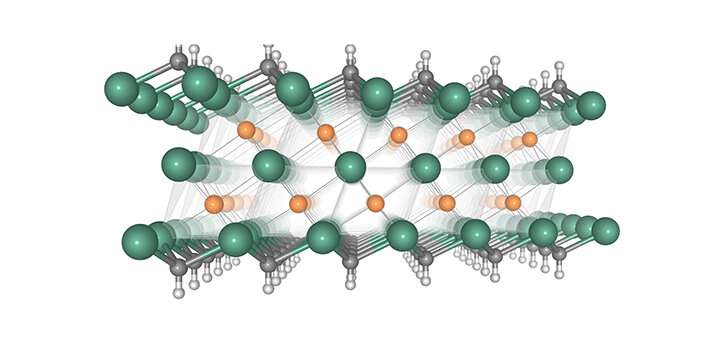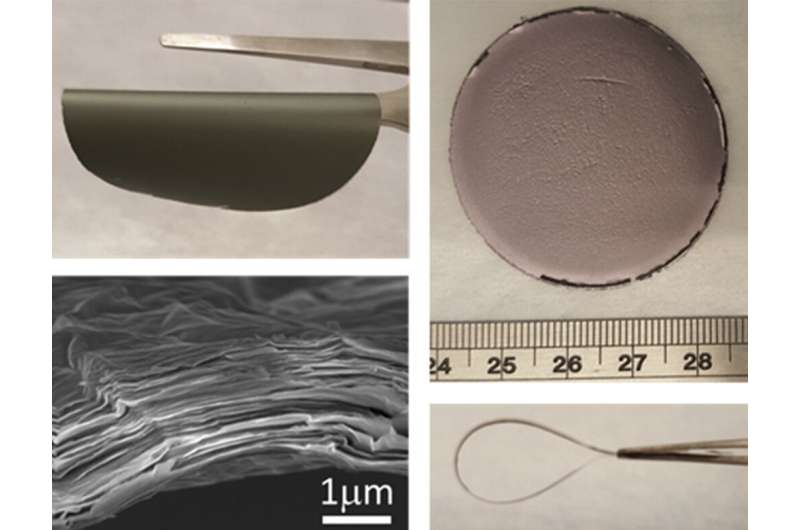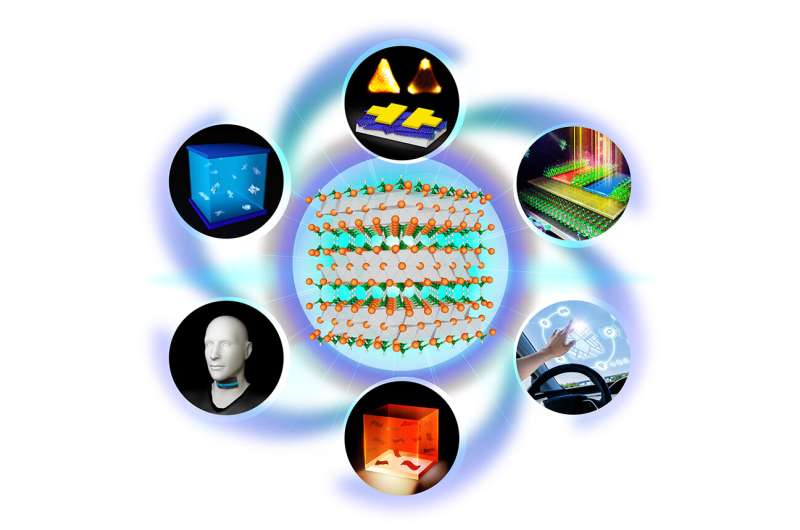Taking 2-D materials to the MAX

Discovered by researchers at Drexel University as electrodes for energy applications, MXenes have become a research focus for KAUST. Husam Alshareef and his team specialize in creating nanomaterials for electronic and energy applications. They turn them into devices, such as supercapacitors, batteries and sensors. The chemically active surface and highly conducting core of MXenes make them an ideal candidate material for the group's cutting-edge materials research.
MXenes typically consist of a core of titanium and carbon atoms, just a few atoms thick. This metallic material (a carbide or nitride) has electrical conductivity comparable to a copper wire. The upper and lower surface of the MXene is covered with metal-oxygen (e.g. Ti-O) and metal-hydroxyl (e.g. Ti-OH) bonds, which are chemically and electrochemically active. "This combination of properties makes MXenes unique," Alshareef explains.
"Researchers at KAUST have made groundbreaking contributions to applications of MXenes in electronic devices and sensors," says Yury Gogotsi, a professor from Drexel University in the United States, one of the discoverers of MXenes. "They have moved them from the material stage to the device stage thanks to their experience with electronics. This is very important and may be a defining moment in the practical implementation of MXenes in industry."
Starting from scratch
"Having the know-how to prepare good-quality MXenes is key to achieving excellent performance," says Alshareef. To make the 2-D MXene atomic crystals, the parent material, known as MAX phase, is first prepared using conventional ceramic processing technology. The M in MAX represents a transition metal, such as titanium; A is typically aluminum; and X is carbon or nitrogen. Solution processing methods are used to selectively remove aluminum to create two-dimensional crystals. These crystals are placed in suspensions that are then used to make films, gels, sheets and quantum dots of MXene.
The challenges in making MXenes is that temperatures as high as 1700 degrees Celsius are needed to make the parent MAX phase, and HF is needed to etch out the aluminum. "We are developing processes to simplify the synthesis protocols and to make them more environmentally friendly and energy efficient to prepare," Alshareef says.

Developing new devices
Recently, Alshareef and his group developed MXene-based soft, super-stretchy polymers called hydrogels. "We call it MXene smart skin," Alshareef says. "It is stretchable by 3,400 percent, self-healing, soft and can sense just about anything—touch force, direction, speed, voice, pressure, temperature, humidity." The team showed that a small piece of smart skin placed on the forehead could differentiate multiple facial expressions, while a piece placed on the skin over the voice box could differentiate each letter of the alphabet just by measuring voice box movement.

Sensor devices, which can capitalize on the large surface area and extraordinary conductivity of MXenes, are another promising avenue of research. Most recently, the team created a MXene-based wearable sweat sensor to monitor key biomarkers in perspiration. The stretchable sensor can simultaneously measure multiple parameters, including lactate, glucose, pH and zinc. "It measures and transmits directly to your phone—and it works," Alshareef says. "Our prototype wearable sweat sensor is functioning well, and our future efforts will focus on miniaturization."
Alshareef's collaborations across the KAUST campus demonstrate the broad potential of MXenes. He has been working with Omar Mohammed to understand their fundamental optoelectronic properties and to fabricate MXene-based photonic and plasmonic devices; Peng Wang, from the Center for Water Desalination and Reuse, to develop osmotic power generators; and Xixiang Zhang to explore the two-dimensional nature of MXenes to grow two-dimensional ferroelectric, electro-optic and piezoelectric crystals that inherit the properties of MXenes.




















